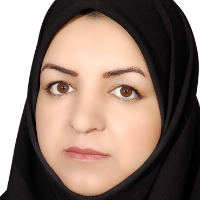Spatial and temporal characteristics of Refrence evapotranspiration using CRU gridded datasets and prediction of its changes during future periods in Khorasan Razavi
Author(s):
Article Type:
Research/Original Article (دارای رتبه معتبر)
Abstract:
Introduction
Evapotranspiration is significantly affected by global climatic changes as an essential component of both climate and hydrological cycles. Comprehensive analyses of the spatiotemporal changes of ETo enhance the understanding of hydrological processes and improve water resource management. The main objective of this study are to investigate and predict the temporal trend and spatial distributions of the reference evapotranspiration (ET0) during 1961-2014, 2021-2050 and 2051-2080 over Razavi Khorasan Province using observed grided dataset named CRU and four GCMs outputs.
Data and methods:
2.1. study areaRazavi Khorasan Province is located in northeastern Iran. This province is located within the longitude and latitude of 56° 19” to 61° 16” E and 33° 52” to 37° 42” N. The climate of this area can be characterized as arid and semiarid with a long term annual precipitation of about 207.5 mm and a long term annual maximum and minimum temperture of 18.3°C and 9.3°C , respectivily.
2.2.data
Monthly maximum and minimum temperature data were collected from updated highr esolution (0.5°× 0.5°) gridded dataset of CRU initially released in 1999 by New et al., total 42 grid points in Razavi Khorasan province. After assessing the accuracy of the CRU data using 11 synoptic stations over this province, the monthly ETo values were calculated using Hargrives-Samani method to study the spatiotemporal variations in this variable. The impact of climate change on future spatiotemporal Eto, evaluated using four coupled atmosphere-ocean general circulation models (AOGCMs) under RCP8.5 scenarios. The parametric t-test and nonparametric Mann-Kendall test methods were used to analyze the temporal characteristics of annual ET during 1961-2005, 2021-2050 and 2051-2080. Results and Conclusions: The results were as follows: (i) generally, ETo increased from north to south across the province (ii) from 1961 to 2014, annual ET exhibited an increasing continuous trend across the area under study (iii) ETo also displayed a significantly increasing temporal trend during two future periods across Razavi Khorasan Province. (v). The difference between mean annual ETo values of two periods was statistically significant in all grid points covering this province. The results showed that these increases may lead to the increase in crop water requirements and aggravate the water shortage in this area in view of the increase in ET0 in response to ongoing climate change.
ETo play an important role in the agricultural and water resources management, and its accurate prediction will signify better planning and management of the water, agriculture and other sectors, hence, using outputs of GCMs can facilitate the sectors by reliably predicting the future climate change impact on ETo in this province.
Keywords:
Language:
Persian
Published:
Journal of Climate Research, Volume:9 Issue: 33, 2018
Pages:
89 to 109
https://www.magiran.com/p1907284
سامانه نویسندگان
مقالات دیگری از این نویسنده (گان)
-
Investigating of yield and yield components response of guar to intercropping with roselle under different levels of nitrogen
Mohammad Nasser Modoodi *, Ebrahim Jahangir Dehborzoui, Vahid Shamsabadi, , Hossein Nastari Nasrabai, Behzad Fahmideh
Journal of Crop Science Research in Arid Regions, -
Evaluation of physiological response and yield function to bio-fertilizer and potassium consumption in melon (Cucumis melo L.) under water deficit conditions.
Hossein Nastari Nasrabadi *,
Desert, Summer -Autumn 2024 -
Spatio-temporal outlier detection and analysis in pressure and wind speed data to study climate change
Zohreh Javanshiri *, Mohsen Rahmdel, Azade Mohamadian
Journal of Climate Change Research, -
Exploratory analysis and in-homogeneity study of temperature and rainfall series of meteorological stations in Iran (period 1989-2018)
Mohsen Rahmdel, Seyed Hossein Sanaeinejad *, Zohreh Javanshiri,
Journal of the Earth and Space Physics,



